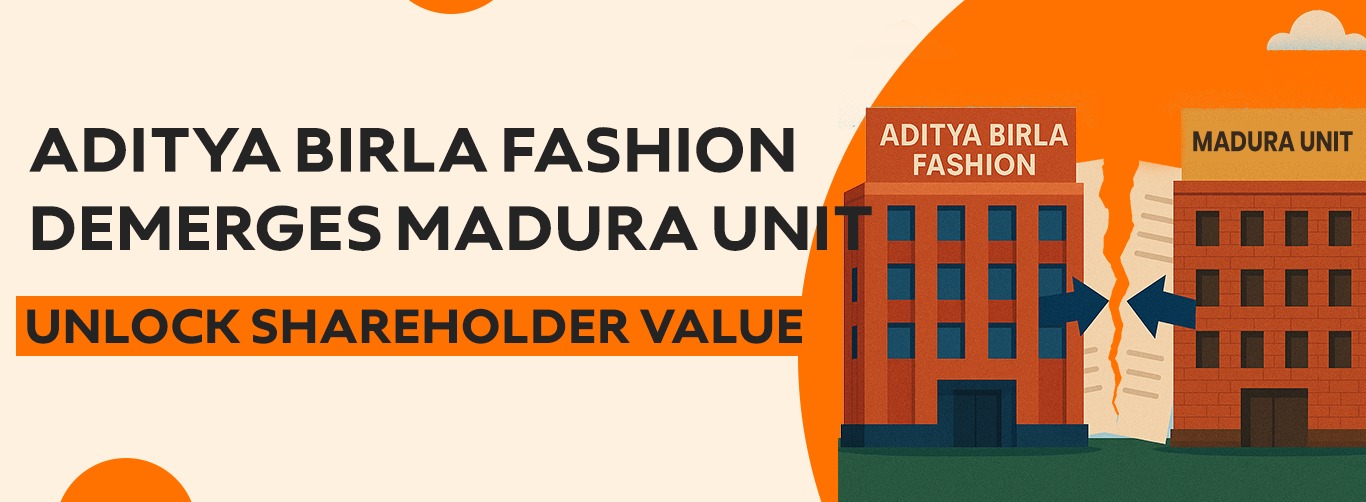Aditya Birla Fashion and Retail Ltd (ABFRL) has formally demerged its Madura Fashion & Lifestyle (MFL) business, creating a standalone listed entity—Aditya Birla Lifestyle Brands Ltd (ABLBL). The record date for the demerger, May 22, 2025, marks a pivotal shift in the company’s structural and strategic framework.
Strategic Rationale Behind the Demerger
The vertical demerger is designed to sharpen the strategic focus of both entities. MFL, a legacy business housing major menswear brands like Louis Philippe, Van Heusen, Allen Solly, and Peter England, accounted for nearly 70% of ABFRL’s consolidated revenue in FY23.
Under the new structure, MFL will operate independently under ABLBL, allowing ABFRL to focus on high-growth segments such as ethnic wear, luxury brands, innerwear, digital-first labels, and value retail (e.g., Pantaloons). According to Chairman Kumar Mangalam Birla, “This realignment is aimed at unlocking value and empowering each business to pursue its growth journey with sharper strategic intent.”
Shareholding & Listing Mechanics
The demerger follows a mirror shareholding model—shareholders of ABFRL will receive one share of ABLBL for every share held in ABFRL, maintaining identical ownership structures in both companies. This strategy ensures value continuity for existing investors.
ABLBL is expected to be listed as a separate entity by the end of 2025, subject to regulatory approvals from SEBI and the NCLT.
Financial Restructuring and Capital Deployment
Post-demerger, ABFRL plans to raise ₹2,500 crore in equity within 12 months. The capital infusion is aimed at strengthening the company’s balance sheet and fueling expansion in its core growth areas. The promoter group has committed full support for this fundraising initiative.
In terms of debt allocation, approximately ₹1,000 crore will be transferred to ABLBL, while ABFRL retains the remaining liabilities. This structured realignment is expected to improve capital efficiency and reduce leverage pressure on both sides.
Historical Context and Corporate Trajectory
ABFRL was created in 2015 through the consolidation of Madura Garments and Pantaloons. Over the last decade, it has grown through acquisitions such as Forever 21 India, Jaypore, and Sabyasachi. The MFL demerger is the company’s most significant corporate restructuring since its inception, aligning with the group’s broader strategy of fostering focused business verticals.
Market Implications and Sectoral Impact
This move places ABFRL among Indian conglomerates such as Reliance and Tata that have embraced demergers to enable operational agility. According to ICICI Securities, “The demerger could unlock substantial value given MFL’s strong EBITDA-generating potential and high brand recall across Tier I and Tier II markets.”
With India’s fashion and apparel sector undergoing rapid consolidation, this realignment sets a precedent for similar moves across the retail landscape.
Execution Risks and Outlook
While the market has responded positively to the demerger announcement, analysts caution against near-term volatility. Key risks include:
- Margin pressure from input cost inflation
- Shifting consumer behavior in post-pandemic retail
- Integration challenges for ABFRL’s remaining verticals
However, the long-term outlook remains optimistic. ABLBL, with its established brand portfolio and wide distribution network, is expected to command a premium valuation once listed.
What Investors Should Watch
Investors should track:
- ABLBL’s listing timeline and governance structure
- ABFRL’s capital raise progress and reinvestment plans
- Q1FY26 results from both entities for clarity on post-demerger performance
Final Thoughts
The strategic demerger of Madura Fashion & Lifestyle positions both ABFRL and ABLBL for greater focus, financial independence, and investor transparency. As the retail ecosystem evolves, this move underscores the group’s commitment to sustainable, long-term value creation in India’s growing fashion market.

Leave a Reply